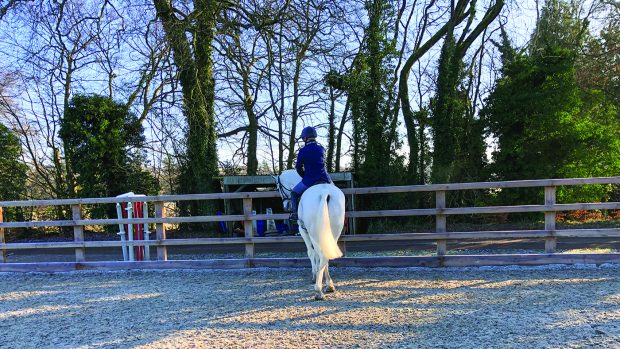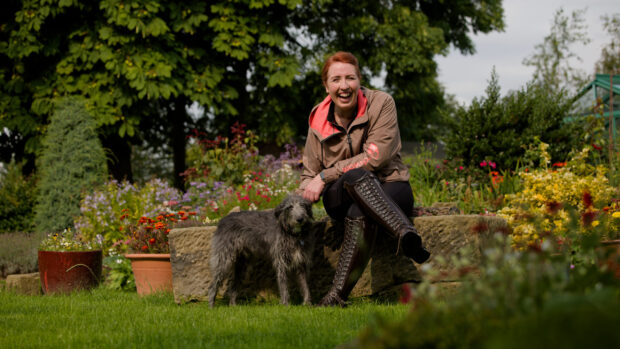British Dressage’s new young horse forum initiative kicked off on Monday (16 January) at Matt Hicks’ Hampshire base, Hurstbourne Equestrian Centre.
Hosted by Paul Hayler, Paul Fielder and Isobel Wessels, the day featured young horses from four years old showcasing the new four-year-old test, right up to a demonstration of the tricky new test for seven-year-olds.
Four-year-old guinea pigs:
- Beth Bainbridge on Harriet Mills’ Indie (by Dream Boy)
- Abi Hutton on Lotty Chatterton’s Suspension Innocent (by Glock’s Johnson x Dayano)
Isobel Wessels is a seasoned judge, and told the audience that she has a rule for judging the walk section of a young horse test: “I often have to tell my fellow judges to be quiet, as there’s a tendency to keep talking about the trot, which you will have already seen,” she said.
Looking at the two guinea pig horses at the BD young horse forum, she said: “Both these horses have a certain amount of over-track, but both could show more, and a bit more freedom in the shoulder.”
A good walk is paramount, as it is the pace the rider can influence the least. A lateral walk — one that does not maintain a clear four-beat rhythm and in which both legs on the same side appear to move in unison — is heavily penalised in tests.
“There is a tendency to be impressed by a very big walk with big overtrack and a slightly slow hindleg,” she cautioned. “But that sort of walk can be harder to work with later on when they have to close the base and produce piaffe and the more collected movements.
“A smaller walk might be a lower mark in a young horse class, but might actually be easier to train later on. The better one might be hard to train in a year or so.”
Continued below…
Like this? You might also enjoy reading these:
What the judges are looking for in a four-year-old dressage class
How to create perfect dressage plaits
Photographing dressage horses: how to show your horse off to the max
Paul Fielder continued: “It can be hard to show the walk in a test environment — riders need to practise this at home and make sure the horse takes the bit forward and properly stretches to it.
“If horses doesn’t naturally follow the hand down, then train on it — don’t neglect it. In the walk, we need to see horses using the topline, coming from the hindleg and stepping through over the back.”
Paul Hayler councilled against throwing the reins away and hoping for the best on a baggy contact.
Isobel added: “Judges only have a short window to assess the walk, so we watch carefully to see how the horse uses its back in the transition; right from the very first stride.”




